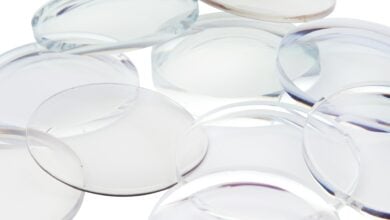It’s a well-known fact that 60-70% of the human body is composed of water. Your hydration needs depend upon your size and weight. Health experts recommend that you drink half a gallon of water every day. We call it the 8×8 rule because half a gallon corresponds to eight 8-ounce glasses of water. Your body needs this liquid to perform its many functions efficiently. Dehydration can render you vulnerable to numerous skin disorders, but drinking waters need purification before consumption.
Simple water purification methods
Purification technologies remove germs and pollutants from water. Impure water has harmful chemicals such as lead and mercury. Impurities can also make this liquid taste like metal. Pure water has a better flavor. Some water treatment methods are:
- Boiling: It’s one of the cheapest ways to purify drinking water at home. Just boil the water for a few minutes, and it’ll kill the germs living in it. If you’re living in areas of higher altitude, you should boil the water a bit more. Boiled water is a microbiologically potable liquid.
- Filtration: Filtering water eradicates many contaminants in it. This technique is cheaper than advanced water treatment technologies. It doesn’t eliminate all mineral salts from the liquid. Only a tiny amount of water gets lost during filtration, for which you can use mechanical filters.
- Chlorination: You add chlorine to your drinking water to disinfect it. There are chlorine tablets and liquid chlorine available for water purification. You can have some pressure tank for well to eradicate many kinds of germs. But this process can make the water smell or taste bad.
- Distillation: Water has a lower boiling point than pollutants. So, you can heat it until water vapors accumulate on a surface. Then you pass these vapors through a tube for condensation where they become liquid again. It’s a slow process not meant for a large amount of water.
Drinking water treatment technologies
- Reverse Osmosis (RO): What is osmosis? Take two containers of water and separate them with a thin film. Add salt into one container. Now water will move for the salt-less container to the one with salty water. In other words, water is moving from lower concentration to higher concentration to maintain equilibrium. In reverse osmosis, we force water to go to the container of lower concentration. This process eliminates many pollutants from water.
- Ultra-Filtration (UF): This process is similar to RO but with a few differences. It also pushes water through a thin sheet to a container of lower concentration. But the film it uses is different from RO. Unlike RO, ultra-filtration doesn’t eliminate mineral salts from water. If you want to drink salt-less water, you should go for RO. UF is also unable to remove foul odor from water. But it’s better for the environment than reverse osmosis.
- Micro-Filtration (MF): The process of micro-filtration bears similarities with reverse osmosis. But, again, MF uses a different membrane. Membranes used by these processes for water purification are porous. The membrane has tiny holes or poles to let water pass through it. MF doesn’t eliminate the virus. Therefore, water treatment plants use UF and MF as RO pretreatments. Micro-filtration also finds its applications in the dairy and petroleum industries.
- Nano-Filtration (NF): The thin sheets used in NF have holes, which lies between RO and MF. It can eliminate organic matter from water by passing it through the membrane. Industries also use it to soften water. Softening water means to remove calcium, magnesium, and iron from it. These elements harden the water and make it difficult for humans to clean our skin with it. Nano-filtration costs more than RO, but it is environmentally safe.
Emerging water treatment technologies
- Anaerobic Digestion: This is a process to create biogas. The word anaerobic means in the absence of oxygen. The biogas obtained thus runs generators to produce clean electricity. Oxygen-free sealed tanks called digesters can also purify water. Multiple environmental benefits of anaerobic digestion make it an attractive water treatment option.
- Advanced Oxidation Process: Hydroxyl radicals are the neutral form of hydroxide ion. We can oxidize wastewater through reactions with hydroxyl ions. This process AOP advanced oxidation processes helps to eliminate organic impurities from water. We can also use ozone or chlorine to oxidize water.
- Membrane Technology: All the technologies we discussed in the previous portion fall into membrane technology. They share similar processing, i.e., passing water through a porous membrane. But now many advanced membrane technologies are emerging. Forward osmosis and membrane with a molecular-weight-cut-off (MWCO) are few examples.
Municipal water treatment step-by-step
- Collection: Rivers and lakes are some significant sources to collect water for supply.
- Screening: Water goes through a screening process to remove larger items.
- Coagulation /flocculation: Added chemical force the suspended particles to accumulate and create a floc.
- Sedimentation and clarification: This floc (impurities) settle down, and then it is removed from the water before filtration.
- Filtration: Water loses its organic impurities and becomes pure enough for us to drink.
- Disinfection: Some germs remain in the water even after filtration. We remove them (i.e., disinfect) by processes such as chlorination.
- Storage and distribution: Purification plants store the water and distribute it after it gets purified. Homeowners use pressure tanks for well to stock their aquatic supplies.
Conclusion
The United States is among the countries providing its citizens with the cleanest water in the world. But even the First World water supply has some health concerns. Some significant problems found in American water is the presence of disease-causing microorganisms. Water treatment procedures can eliminate many of these water diseases. Your family deserves the safest aquatic supply. These purification technologies ensure you get the cleanest water scientifically possible to obtain.




